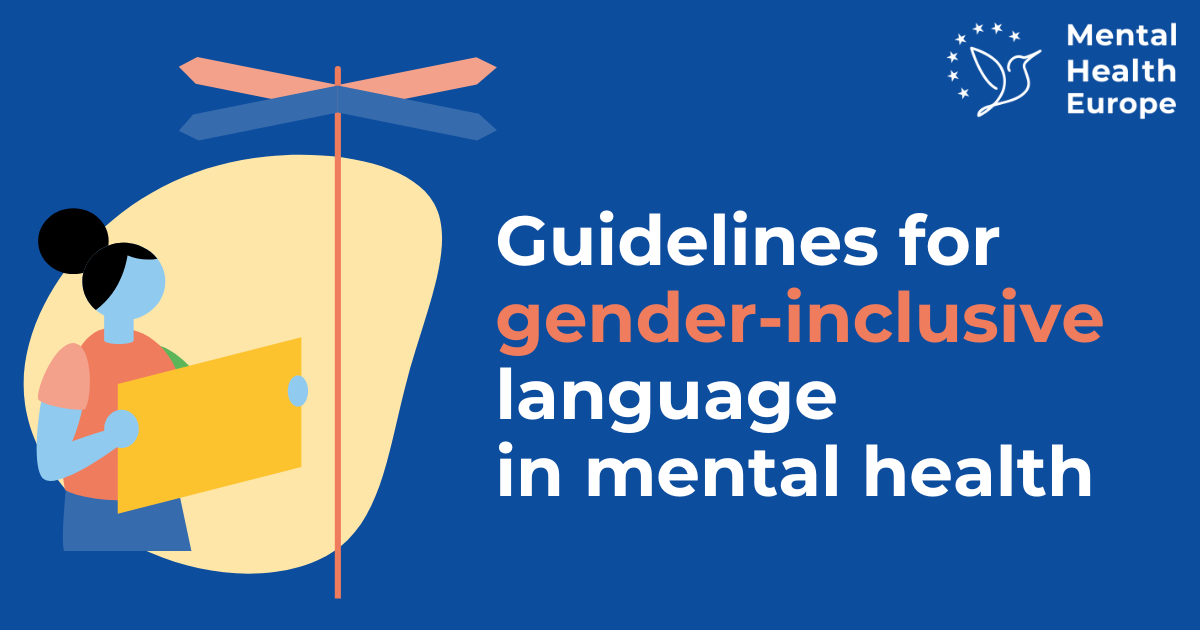Guidelines for Gender Inclusive Language in Mental Health

Mental Health Europe launches the Guidelines for Gender Inclusive Language in Mental Health
Gender is one of the “intersectional traits” to be considered within the framework of the psychosocial model of mental health. According to this model, mental health is deeply entwined with the socio-cultural context in which a person lives, and consequently, it stresses the influence of the dynamic interplay between psychological and social determinants on mental health and well-being.
In addition to the structural inequalities linked to gender, it is necessary to point out the influence that gender-related language has on mental health. Language plays a crucial role in setting or challenging gender stereotypes and expectations, and the implications of gender-biased language are far-reaching: from the impact on a person’s sense of self to the reinforcement of stereotypes and the perpetuation of traditional roles in work, society and households. Gender-related language is, in fact, deeply intertwined with the societal discourse, and it often affects our understanding of a person’s identity and the place they have or should have in society.
These guidelines address the influence of gender-related language on mental health and explore how breaking down societal expectations around gender by employing gender-sensitive and gender-neutral language can contribute to creating a more inclusive environment that supports diverse mental health needs. The guidelines also provide practical examples of gender-biased language and new approaches towards a gender-inclusive language that can support good mental health. Lastly, given the relevance that media play in representing both gender stereotypes and mental health issues per se and in combination, these guidelines present tips for media practices that are sensitive to both gender and mental health aspects.
Stay connected
Get our latest news, personal stories, research articles, and job opportunities.